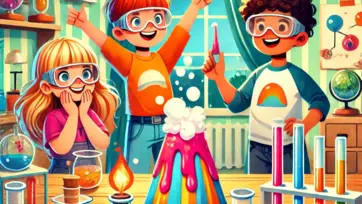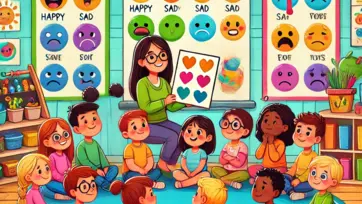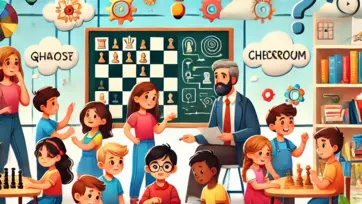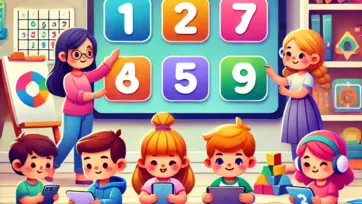Science is all around us, making it one of the most exciting subjects for kids to explore. By introducing children to various science topics, we can spark their curiosity and help them understand the world in a fun and engaging way. Here are some of the best science topics that kids can learn to develop a strong foundation in science while having fun!
1. The Solar System and Space Exploration
Kids are often fascinated by the stars, planets, and the mysteries of the universe. Learning about space can inspire their imagination and curiosity.
Fun Activities:
- Create a model of the solar system using foam balls and paint.
- Use a telescope to observe the moon and planets.
- Watch documentaries or animations about space missions and astronauts.
2. The Water Cycle and Weather
Understanding the water cycle and weather patterns helps kids learn about nature’s processes and how they affect daily life.
Fun Activities:
- Make a simple water cycle experiment using a plastic bag and water.
- Track the daily weather and learn to identify different types of clouds.
- Build a homemade rain gauge to measure rainfall.
3. Animals and Their Habitats
Learning about animals and their environments teaches kids about biodiversity and the importance of conservation.
Fun Activities:
- Visit a zoo or aquarium to see different animals up close.
- Create a shoebox diorama of a chosen animal habitat.
- Learn about endangered species and how to help protect them.
4. The Human Body and Health
Understanding how the body works helps kids appreciate the importance of health and hygiene.
Fun Activities:
- Use an anatomy puzzle or app to explore different body systems.
- Create a lung model using balloons to show how we breathe.
- Experiment with different foods to learn about nutrition.
5. Electricity and Magnetism
Electricity powers our world, and learning how it works is both fun and educational for kids.
Fun Activities:
- Build a simple circuit with a battery, light bulb, and wires.
- Test objects to see if they are magnetic or non-magnetic.
- Create a homemade electromagnet using a nail and copper wire.
6. Forces and Motion
Physics becomes exciting when kids experiment with how things move and why.
Fun Activities:
- Build and test a simple catapult.
- Make a paper airplane and test different designs.
- Experiment with toy cars on ramps to learn about gravity and friction.
7. The Science of Plants
Learning about plants and how they grow can encourage kids to appreciate nature and gardening.
Fun Activities:
- Plant seeds and observe their growth over time.
- Learn about photosynthesis by placing plants in sunlight and shade.
- Dissect a flower to study its parts.
8. Earth Science and Natural Disasters
Understanding earthquakes, volcanoes, and other natural events helps kids learn how our planet works.
Fun Activities:
- Create a baking soda and vinegar volcano experiment.
- Build an earthquake-resistant structure using marshmallows and toothpicks.
- Watch videos of real natural disasters and discuss safety tips.
9. Dinosaur Discovery and Fossils
Dinosaurs captivate children and introduce them to paleontology and the history of life on Earth.
Fun Activities:
- Dig for “fossils” in a sandbox using small brushes.
- Make fossil imprints using clay and small objects.
- Learn about different dinosaur species and how they lived.
10. Kitchen Science and Chemistry Experiments
Everyday materials in the kitchen can teach kids about chemistry in a fun way.
Fun Activities:
- Make a baking soda and vinegar volcano.
- Experiment with food coloring and milk to create colorful patterns.
- Learn about density by layering different liquids in a glass.
11. Light and Sound Experiments
Light and sound are essential parts of science, and exploring them through experiments can be fascinating.
Fun Activities:
- Use a prism to separate light into a rainbow.
- Make a homemade telephone with string and cups.
- Experiment with mirrors to learn about reflections and angles.
12. Technology and Robotics
Introducing kids to technology and robotics helps them develop problem-solving skills and an interest in engineering.
Fun Activities:
- Build a simple robot with a kit.
- Learn coding through beginner-friendly programs like Scratch.
- Create a basic circuit using LED lights.
Conclusion
Science is an exciting and limitless subject that allows kids to explore, experiment, and discover new things about the world around them. By incorporating hands-on activities, interactive experiments, and engaging learning methods, we can make science fun and enjoyable for children. Encouraging their curiosity at a young age can set them up for a lifelong love of learning and discovery!








